How To Make Bogman's Weedseed Gruel (Without Being A Bogman)
How To Make Bogman’s Weedseed Gruel (Without Being A Bogman)
by Raynor Ganan

What’s the oldest recipe you know? Is it your grandmother’s top-secret ingredients list for johnnycakes? Perhaps you collect cookbooks and can point to a delightful “fricassée of sheep trotters” in your prized 18th-century housewife manual. You might even know about the marvelous medieval cookery website and are tempted by its zervelats(sausages stuffed with bacon and cheese) or chardewardon (pear custard). Because of the written word, a preservative even more potent than pickle brine, we know what Julius Caesar ate for dinner 2000 years ago1 and a formula for cake bread that appears in the Bible2. But not all cultures have had writing, which means that many of history’s greatest dishes have been lost to time. But maybe not! Through a collaboration across disciplines, historians and scientists are able to reconstruct millennium-old recipes for our tasting pleasure. This is the story of an Iron Age bogman, what he ate for his last meal a thousand years ago, and how, with a little resourceful gathering, you can make it for dinner tonight.
In the late Danish spring in 1950, as hyacinths yielded to tulips and the days grew increasingly longer, Viggo Højgaard and his brother Emil began digging a hole in the local bog in search of peat to fuel their cooking stove. They cut through the mud as they always had, collected the peat as they always had, and loaded a sizable swath in their cart as they always had. But then Viggo’s wife wandered by and spotted something that none of them ever had — an umber brown foot attached to a sinewy, naked thigh sticking out of the sod. The Højgaard brothers had stumbled upon a body, but not just any body, they had discovered the body of a remarkably preserved man from the 4th-century BC.

As Martin Jones writes in Feast, the conditions of the Bjældskovdal Bog were ideal for natural mummification. The acid level was just high enough to tan and toughen the bogman’s soft tissue but not so high so as to completely dissolve it. There was also a scarcity of oxygen and the bog moss’s uncanny ability to leach away all nutrients — both necessary provisions of decay organisms. The 2000-year-old bogman had casually escaped the shipwreck of time. The Danish anthropologist P.V. Glob writes in (the thoroughly engrossing) The Bog People, how well preserved Tollund Man was. His face was so tranquil it seemed he might have died while dreaming of sunshine and frolicking woodland creatures. His skin was so well protected that forensic investigators could take his fingerprints; and his stomach contents had decayed so little that scientists could establish, down to the smallest crumb, what he ate for his last supper.
Through modern paleo-CSI analyses, investigators were able to determine the source of the water Tollund Man drank (one abundant with sphagnum moss), what the fire that heated his food was fueled with (heather), and even how hot it was when it finished cooking (98°, like my second-favorite boy band).
But more interesting was what they learned about his eating habits. For starters, no trace of animal flesh could be found amongst the bogman’s stomach contents — his last meal was entirely vegetarian. Even more peculiar, there were no green vegetables to be found — everything in his gut was either seed or grain. And not just any seeds or grains, his last meal was very probably a gruel made with over 40 varieties of weedseeds, dense chaff, low-yield grass cereals, and hard-to-harvest runt grains. There’s nothing wrong with eating weedseeds per se; in fact some of the seeds were wild relatives of buckwheat and quinoa. However, as Richard Mabey writes in Weeds, the bother of gathering weedseeds as a food would hardly be worthwhile — it can take more energy to collect them than one can recover in consuming them.
Astonishingly, our bogman’s grain binge is consistent with the gruel diets of other recently unearthed bog bodies like Lindow Man, Grauballe Man, Windeby girl and dozens more. To ratchet up the intrigue, it now seems that all of these bog bodies were the victims of murder (the plot, like weedseed gruel itself, thickens). What’s the correlation between these ancient bodies and their diet? Were they victims of an Iron Age witch hunt for vegetarians? Were they sacrificed by their own people and given a ritualistic last meal rife with earthen seeds? Perhaps they were early advocates of biodiverse polycultures and perished before anyone could figure out how to make harvesting 40-plus unique seeds a viable alternative to hunting small game. Archaeologists are still debating, but one thing we do know is the approximate recipe of our bogman’s weedseed gruel. I have adapted this soon-to-be favorite family dish from an old Viking recipe and a Roman treatise on nature. Enjoy!
BOGMAN’S WEEDSEED GRUEL
— bog water: water infused with sphagnum moss works best • 10–15 cups
— cultivated grains:
pearl barley • 2 cups
wheat kernels (soak overnight) • 2 cups
flax • ¼ cup
willow herb seeds • ¼ cup
gold-of-pleasure seeds • ¼ cup
knotweed seeds (may cause photosensitivity) • ¼ cup
— with smaller amounts of:
fat hen (a relative of quinoa) seeds • ½ tsp
corn spurrey seeds • ½ tsp
black bindweed (a relative of buckwheat) seeds • ½ tsp
violet seeds • ½ tsp
hemp nettle seeds (potentially poisonous) • ½ tsp
mustard seeds • ½ tsp
dock seeds • ½ tsp
green bristle-grass (related to millet) seeds • ½ tsp
corn chamomile seeds • ½ tsp
redshank seeds • ½ tsp
greater plantain seeds • ½ tsp
clover seeds • ½ tsp
rye-grass seeds • ½ tsp
Yorkshire fog seeds • ½ tsp
buttercup seeds (may cause blistering of the skin) • ½ tsp
lady’s mantle seeds • ½ tsp
yarrow (may cause rashes) seeds • ½ tsp
smooth hawksbeard seeds • ½ tsp
fine sand3 • ½ tsp
1. Mix all ingredients into a bowl.
2. Stir.
3. Cook over fire (preferably one using heather as a fuel) for 1 hour, adding moss water as needed until gruel has reached desired consistency.
4. Salt4 to taste.
5. Trust no one.
While I have yet to make this gruel on my own5, in the golden age of British archaeology television (the 1950s), two prominent archeologists did. On the show “Buried Treasure,” Sir Mortimer Wheeler and Dr. Glyn Daniel tasted our bogman’s last supper. Sadly, this important footage doesn’t seem to be online, but in her book Wet Site Archaeology Barbara Purdy reports that the dish was rather oily and had a greyish-purple color, with flecks of orange and black throughout. Neither gentleman could stomach the porridge leading both to chase it with a rich Danish brandy from a cow-horn. The wry Mortimer commented to his companion that with porridge like that, perhaps the bogman had thrown himself into the bog.
1 Spoiler Alert: prickly globe-fish and swine udder patties.
2 A little water + a handful of meal + some oil et voilà! (1 Kings 17:12–13)
3 Only recently has the FDA started to acknowledge the benefits of eating sand. According to this questionable source, an enterprising chemistry student has invented the “Sand Bar,” an energy bar which is essentially “chocolate-covered beach.”
4 Salt was neither detected nor detectable in the bogman’s stomach, though Pliny mentions that the Germanic tribes did indeed salt their gruel.
5 Unsurprisingly, there is only one place on earth where all of these ingredients are found together and that place is in Denmark — bogman’s weedseed gruel is the epitome of the locally sourced movement.
Previously: What Does Elephant Taste Like?
Raynor Ganan is a mammal who spends time in the commonwealth of Massachusetts. He occasionally contributes to the ragbag, a component of the internet. Photos courtesy of The Tollund Man website.
Regret: Who Does It Better?
Do young people feel more regret than old people? Don’t test me, young people.
Nature Did It First!
“As the footage begins, you can see one gorilla stopping briefly to rest under a tree, but then it’s compelled to move forward by the troop. When another spots the camera trap, it briefly charges, Tarzan style, toward the screen, beating its chest.”
— We know you’ve watched too many movies when we describe the way a gorilla beats his chest as “Tarzan style.” (But I love you, Jennifer Viegas! I have watched too many movies, too!) That’s like saying that a horse’s hoof is horseshoe-shaped, right? Anyway, extremely rare footage of the extremely rare Cross River gorilla!
Do New Stuff And Be Satisfied With What You Have Yourself Happy
“A researcher at the University of Missouri has developed a model to help people become happier and stay that way…. The model consists of two components: The need to keep having new and positive life-changing experiences and the need to keep appreciating what you already have and not want more too soon, he explained.” This actually seems kind of plausible, but it also seems like a lot of work, and I don’t know that happiness is worth the effort.
BuzzFeed Explained
“Cute makes us feel good, and, in reaction, we want to approach whatever it is that’s cute, so we speak in higher voices, say gentle, soothing things, and are easily distracted from, say, reporting a story about politics or food safety.”
President Endorses States' Rights
Or: Local President Takes Four Years In Office to Approve of Gay Marriage. (Aww, no, it’s nice, I guess.)
What Are The Best Audiobooks For A Road Trip?
What Are The Best Audiobooks For A Road Trip?
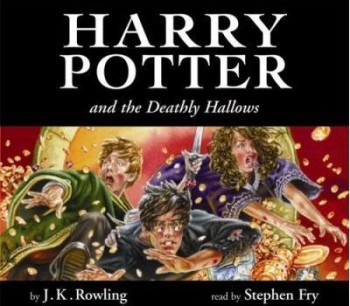
Summer is on its way (let’s ignore this dreary spring) — and for many of us that means climbing into a car and driving for a long, long time to reach wherever our vacation is taking us to (the beach! college reunions! Chicago!). And what better distraction from an endless straight shot of highway than an audiobook? But, as anyone who has ever been stuck in a car for 13 hours with only a CD read in deadly monotone for company, not all audiobooks are created equal. To find out the best ones, we asked an assortment of folks for their favorites. Some had specific recommendations (as well as titles to stay away from), while others had picks for entirely different entertainment options for your drive.
I love them, I love them. Mostly I listen while I cook. My favorite voice in all the world (aside from that of my husband who has read, alas, no audiobooks) is Alan Rickman’s, and he has read just one: The Return of the Native. This I suspect is the best audiobook ever recorded. A little bit of it is excerpted on YouTube, where Mr. Rickman sings in French. Ah, me.
There is a gigantor unabridged full-cast audiobook of Philip Pullman’s His Dark Materials trilogy. I’m a huge fan of those books and was therefore giving the very idea of an audio version the ferocious side-eye but man, it is awesome. Pullman reads the narrative parts himself, and all the actors of the dialogue are superb, even the guys who voice Iorek Byrnison and Iofur Raknison. So good, so absorbing you could easily crash the car into a pole if you don’t watch it. By contrast, the “adapted” full-cast Lord of the Rings audiobook is mainly ghastly.
Steve Buscemi reading Motherless Brooklyn is better than the book, I thought.
The audiobook of Geoff Emerick’s Here, There and Everywhere: My Life Recording the Music of The Beatles is read by Marvin Jarvis; the story requires about a zillion British accents and they are all amazing, perfect. Plus, it’s a ripping yarn. If you hate The Beatles, maybe you could buy this for your parents sometime.
If nobody has mentioned it yet, please include the very best podcast I know, “The Tobolowsky Files,” in which the gifted actor Stephen Tobolowsky tells very, very compelling stories about his life.
I get my audiobooks for free from Librivox.org. These works are all drawn from the public domain and read by volunteers. It’s a crowd-sourcing approach to providing digital content straight from the Guilded Age. The majority of works will be from before 1923, so be prepared for archaic style, diction and idiom. And be warned that items with broader appeal, like sci-fi and mystery short stories, are likely to be read in fake British accents by teenagers with retainers.
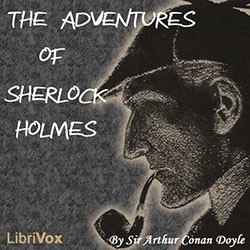
Remember when your English teacher told you that ‘showing’ rather than ‘telling’ is the secret to good writing? This is not always true for audiobooks. The Adventures of Sherlock Holmes are the quintessential listen-anywhere stories precisely because they provide so much juicy exposition. With audiobooks, you can get lost in a complex narrative, so it’s actually a blessing when Sherlock condescends to break it down for Watson and Lestrade. I recommend this particular version (version 3) because it is read by Mark Smith of Simpsonville South Carolina, who is like the Ralph Richardson of Librivox. He reads in a pleasant, Rod Serling baritone, but is not too dignified to act out the parts in silly falsettos and such.
It’s strange, but listening to books rather than reading them awakens in me an appreciation of the baroque and ornate, of bombast. When I read, I’m fond of minimalist, hygienic prose, but when I’m going through life with my earbuds in, I don’t like to have to hang on every word. If I’m installing a toilet or stuck in traffic I go straight for Edgar Rice Burroughs’ John Carter series. Listening to A Princess of Mars is like watching a science fiction rock opera by Queen. It’s all about narrative excess and unlimited imagination spurred on by a hidebound anglophile’s sense of language, and an awareness that one is being paid by the word. This is version 2, read by Mark Nelson. His voice is perfect for this because it has that resonant, old-world newscaster gravitas. It’s like having Walter Cronkite give us an evening news report on swordfighting aliens in bejewelled codpieces.
I remember one 10-hour road trip from Los Angeles to San Francisco where my friends and I decided it was time for us to start reading the Harry Potter books so we could join the zeitgeist, so we bought the first couple of books and read them out loud to each other on the drive up, complete with fake British accents and voices for each of the characters. So, it was sort of a live audio book in a way. Otherwise, I once downloaded the free iPhone app, “Audiobooks,” which I intended to use so I could listen to free readings of classic novels, but that never happened. Podcasts like “This American Life,” “Radiolab” and “The Nerdist” take up much of my audio-listening time.
I hate to admit it, but I forget about the existence of audiobooks. It’s too bad, actually, because I’m a seasoned road tripper and the few times I’ve listened to audiobooks I’ve usually enjoyed listening to yarns in the car. (I lean heavily on “This American Life” and “Radiolab” for my story fix.) About a decade ago, just as the massiveness of the Harry Potter phenomenon was emerging, I picked up the British audiobook of Harry Potter and the Philosopher’s Stone performed by Stephen Fry, and it’s just wonderful. Stephen Fry is a genius. I’m convinced he could somehow make Eat, Pray, Love an enjoyable listen. Around the same time, I bought Don DeLillo’s Mao II at a yard sale, and it was terrible. I hate to posit that DeLillo doesn’t translate to audiobook, but alas! I’m a huge David Mitchell fan and came across the The Thousand Autumns of Jacob de Zoet audiobook, which I’d already read, but it was a heady adventure to hear out loud.
A great audiobook for touring around is the eminently listenable Sarah Vowell and her Assassination Vacation to the strange tourist sites related to assassinated presidents. I got my husband all of David Sedaris’s audiobooks one year for a present — Me Talk Pretty One Day is my favorite. Sedaris seems essential for any Audiobook Canon. My husband likes to listen to Mark Twain’s Huckleberry Finn when he runs. That sounds pretty perfect to me. I drove around Britain recently visiting writers’ houses, and I couldn’t get over that the BBC still produces Radio Dramas. I was hooked. They’re full of drama and adventure. I think that’s my recipe for the best listening. Go for the popcorn stories. Look for serious adventure or serious humor — the swashbuckling and tall tales. These are stories you can dive in and out of. Or if you’re driving out West, get Annie Proulx’s Close Range: Wyoming Stories. Consider the landscape and the destination.
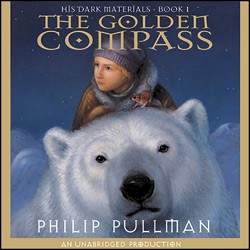
I love audiobooks — although for a while I had an unerring ability to pick only ones that would be excruciating when played in a crowded car. Like thrillers that would have, out of nowhere, a bonkers sex scene (looking at you, J. Kellerman) while the stepkids were in the backseat frantically trying not to hear over their earbuds, etc. My favorite, by far, is the gorgeous production of The Golden Compass trilogy, which is amazing even (or especially) if you already love the books. Another great one is this reading of Josephine Tey’s The Daughter Of Time, where her detective Alan Grant attempts to figure out from his hospital bed whether Richard III was really responsible for the Tower deaths of his nephews. It’s one of my favorite mysteries, and for some reason it’s especially good when read aloud. (Also, when I’m listening, I can almost keep the Plantagenets straight.) Currently, I have Donna Tartt’s reading of Charles Portis’ True Grit out from the library. I’ve been meaning to listen to it since learning about it here.
We used to get audiobooks (on cassette! as well as CD) from the library. I figured it was a great way to catch up with classics. I don’t know that we roadtripped with many, it was more for commuting up to the BookSense/American Bookselling Association office in Tarrytown from Brooklyn.
The one I remember best isn’t the Dickens or the Margaret Atwood (or the really annoying Ishiguro) but rather the Jeeves and Wooster, which were sidesplitting and read by just the right reader — whose name, he said, with a weak and rather wet apology, I have forgotten.
I am not in the habit of listening to audiobooks. I just find that my mind wanders and I lose the thread and then I give up on rewinding to figure out what’s going on. I tried and failed with Anna Karenina years ago — on tape, borrowed from the Brooklyn Public Library — when I was driving for hours every day for a job. That might have been a bad place to start. My wife, a writer and voracious reader of fiction, is a big believer in audiobooks and has been trying to sell me on them. We did listen to Wilkie Collins’s The Moonstone, an 1868 detective novel of sorts, while driving across the country together. This was intermittently enjoyable, but I began to suspect that Dickens was paying Wilkie by the word when he serialized the novel in his magazine. My wife did convince me to try listening to an audiobook as a way of curing insomnia. The drug was Stendhal’s The Red and the Black. This proved too interesting to put me to sleep, and yet still too difficult for the restless mind to adequately absorb in audio form.
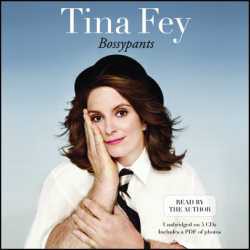
I don’t listen to many audiobooks — I find them hard to pay attention to and often forget they’re there — so I need the reader to have a distinctive voice and conversational style (lecture-style makes me zone out). Tina Fey’s Bossypants really nailed this for me.
The library down the street from my apartment has a surprisingly well-curated audiobook shelf!
I tend to listen to audiobooks while I’m at the working out, actually. Having an audiobook in my headphones tends to make that slog on the treadmill a lot less awful. I hate going to the gym, but I love a good story.
I don’t often listen to audiobooks because they make me fall asleep and then when I wake up I have no idea what’s going on. For this reason, the only audiobooks I ever really partake in are the Harry Potter ones because they make me fall asleep fastest, plus I already know what’s going on so it makes no difference whether I’m paying attention or not. FYI I prefer the Stephen Fry to the Jim Dale version, or actually maybe I like Jim Dale better — who even knows when you’re asleep? I think it’s Jim Dale who does this really annoying voice for Hermione, but then again, Hermione is pretty annoying so it works.
When I was growing up my family used to listen to audiobooks on long car trips and that was pretty fun, but I don’t really remember any of them. I remember being really creeped out by Daphne Du Marier’s Rebecca, obviously. There was scary organ music I think.

Life in Los Angeles is one long road trip, and I’ve been obsessed with audiobooks since I moved here. Mostly I get them from Audible. I plug my iPod into the car, and then I take it with me to the gym or on a walk, or I listen while I do anything remotely boring: dishes or folding laundry. I listen to books I probably wouldn’t get to otherwise, including a lot of nonfiction. Bill Bryson’s A Short History of Nearly Everything is completely fascinating, and it doesn’t matter if you space out and miss stuff while you look for your exit or think about something besides supercolliders. Stephen Greenblatt’s Swerve is great in the car, too. Hilary Mantel’s Wolf Hall and Cormac McCarthy’s novels are particularly good on audio because the readers have done the work of figuring out who’s talking, which is sometimes real work, and they give you different voices. Blood Meridian is its own horrific road trip, and parts of Orange County will always remind me of the late, amazing Frank Muller reading All the Pretty Horses. The reader matters! Frank Muller, Nadia May, Simon Vance: I want them in the car with me. I’ll listen to anything they read.
I just looked at my Audible library and was told I own over 400 audiobooks with them alone.
Actually, my go-to books for long road trips are Trollope novels. They’re really long, involving and funny, with a ton of great characters, and a good actor can do a LOT with them. I love 19C novels, though, so your mileage may vary.
With kids, it would be hard to go wrong with the Tim Curry readings of the Lemony Snicket books. He’s one of the few actors who can pull them off, and they tend to be as amusing for kids as they are for adults.
I don’t listen to audiobooks, but I did recently discover Words That Burn, a iPad app collection of poems read by actors. Dominic West reads Shelley and Lowell, Ralph Fiennes reads Auden, Juliet Stevenson reads Dickinson, Harriet Walter reads Plath, Harold Pinter reads Larkin, and so on. I like to listen when my mind won’t slow down.
Just today my friend Laura Miller sent word of a The End of the Affair audiobook read by Colin Firth. “Could this convert Maud to audiobooks???????” she writes. Maybe.
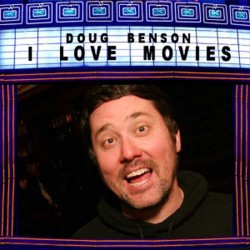
I actually have never listened to an audiobook — at least, not on purpose, since I was a kid held hostage in the back of my parents’ minivan. The last road trip I took was spent listening to mixes my friend had made in middle school; the one before that, listening to the entirety of Doug Benson’s I Love Movies podcast. Both great, but not books.
This is embarrassing and wholly fitting my image I suppose, but the only audiobooks I’ve ever listened to are by Garrison Keillor. Specifically, his Lake Wobegon books and his Book of Guys. The latter of which, I’ll admit, I still listen to occasionally. I especially like The God of Canton.
While I enjoy the stories it’s really more about Keillor’s voice. I grew up with that voice and, as I traveled, when young and old, having it to listen to always calms me down and reminds me of home His voice is an anchor to a place I grew up.
Honestly, the last time I listened to an entire audiobook it was short stories of Mark Twain, played on cassette, while driving from San Francisco to Los Angeles, with my grandfather in the passenger seat. I may have tried to listen to a Gore Vidal novel on audiobook bought on iTunes once but I’m pretty sure I gave up ten minutes into it. So I might not be the best person to ask.
I listen to audiobooks when I go running — at the park or on the treadmill. I wouldn’t run otherwise; it would be too unpleasant. I also listen to them when I cook and clean. The greatest thing is that I actually can’t listen sitting down. No matter how into the book I am, my attention will wander or I will fall asleep. For me, audiobooks are the ultimate reward system for productive behavior.
I recommend listening to books that you have read already but that are good enough to justify the extra consideration. As much as I love listening to books, I don’t think it’s a substitute for reading a book the regular way — personally, I like to read with a pen and to be able to easily stop and think. But hearing a good book read aloud by a skillful narrator — especially when you’ve read the book and therefore aren’t entirely held captive by the plot — will reveal new aspects of it. I loved listening to The Corrections, The Emperor’s Children and The Namesake. I was struck by how densely packed they were with good things — one smart, witty observation after another, a crackling intelligence, the consistent grace of the sentences. On the other hand, some books are revealed to be thinner, belaboring scant ideas or themes. When you read — I mean, read-read — you instinctively speed through sections that are less good. Listening to a book means that every word will be given equal weight. Padding will be seen for what it is. Also, authorial self-indulgence. (Take the last few pages of Jane Eyre — they are just embarrassing when read aloud. I love the book, but when I read it in text form, I must have always skimmed the end, where Brontë is going on and on like a juvenile romantic fantasy about how Jane and Rochester share a single soul.)
I used to go to the Brooklyn Public Library and borrow them on CDs and then rip them and put them on my iPhone but it was so cumbersome a task and the selection was limited. I finally gave up and joined Audible. I am looking for an alternative solution.
Nadia Chaudhury needs to listen to the audiobook where Michael Fassbender reads Dracula as soon as possible.
Sponsored posts are purely editorial content that we are pleased to have presented by a participating sponsor, advertisers do not produce the content. This post is brought to you by NEW Armor All Extreme Shield Wax. Come to Facebook.com/ArmorAll for a chance to win a new 2012 Chevy Camaro SS autographed by Tony Stewart.
Five Good New Rap Videos
Watching the ridiculous Maybach Music Group press conference last week, I had the rare and disconcerting experience of agreeing with something that Sean “Puffy” Combs said. He said that MMG founder Rick Ross has “the best ears in the game.” I think that’s right, as exemplified by the huge, wonderful beats he chooses for his records, and by the fact that he discovered Philadelphia rapper Meek Mill a couple years ago. Meek, I think, is the most talented rapper on the label’s roster — his “Tupac Back” and “I’m a Boss” were highlights on last year’s showcase album, MMG Presents, Self-Made Vol. 1. And judging from his recent single, “Lean Wit It,” and now the above video, his new mixtape, Dream Chasers 2, is likely to be great. Man, does he sound hungry and intense! (And I still can’t over how much I enjoy the fact that a tough-guy rapper calls himself “Meek.”)
Meridian, Mississippi’s Big K.R.I.T. is much less intense, but is doing a good job of both honoring and pushing forward the thoughtful, soul-steeped tradition of mid-’90s Southern rap. Cars are important to this type of music, and K.R.I.T. got some nice ones for his new video.
Juicy J has spent the past year reminding us over and over and over again how much he likes drugs. Somehow, it has not gotten boring yet. (I guess that has something to do with how he knew that a mundane phrase like “calculator and a lighter” could sound really cool as sort of frozen-faced zombie chant.)
M.A.R.S is a supergroup made for people who think that rap has never gotten any better than Nas’s 1994 debut album Illmatic. Nas’s old Queensbridge partner Cormega (or ‘Mega, thus giving the acronymic name its first letter) has assembled Action Bronson, Roc Marciano, and Saigon to join him on this vintage-sounding track from Main Source producer Large Professor. “Boom bap,” this style is sometimes called, because of prominence of the interplay between the bass drum and the snare. It’s a very straight-up-and-down sound, and distinctive to New York.
Here’s another nod to Nas — Yasiin Bey (formerly known as “Mos Def”), Dead Prez and Mike Flo have remade the Queens star’s 2003 hit “Made You Look” (which was built around the classic break-beat from The Incredible Bongo Band’s cover of the Shadow’s “Apache”.) Except they changed the words in the chorus to “made you die” — to protest the shooting of Trayvon Martin.
Where To Live When You Want To Die Young
“In 661 of American counties, girls born in 2009 are expected to live shorter lives than women born twenty years earlier. And this worrying trend affects 84% of Oklahoma and 58% of Tennessee counties, according to a new study.”
Paul Heaton Is 50
A very happy birthday to Paul Heaton of The Housemartins and The Beautiful South. Thank you for all of these songs!
